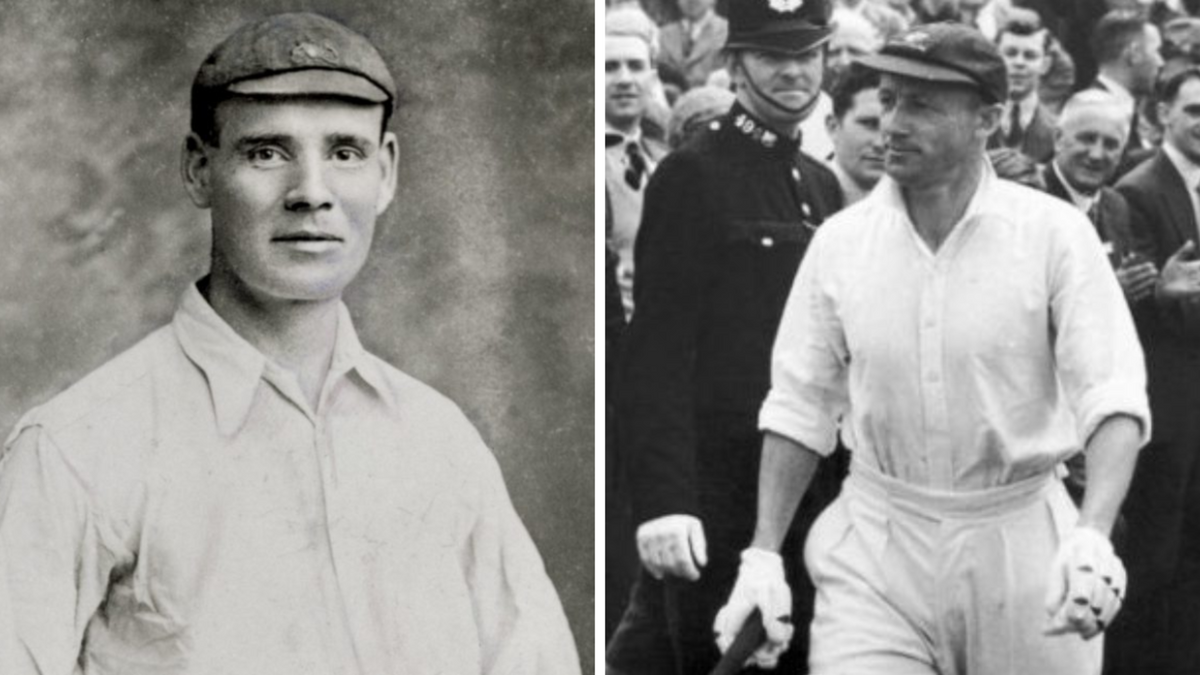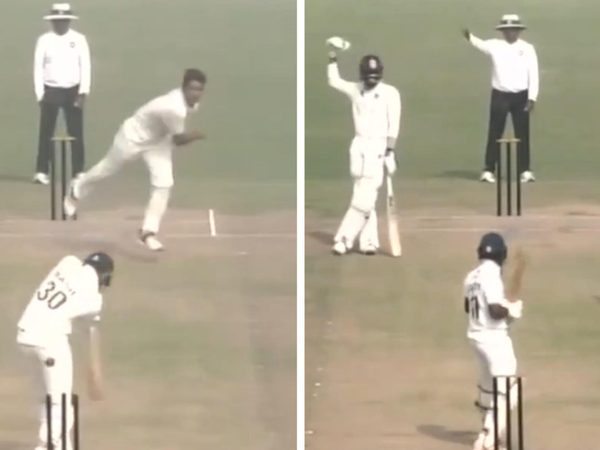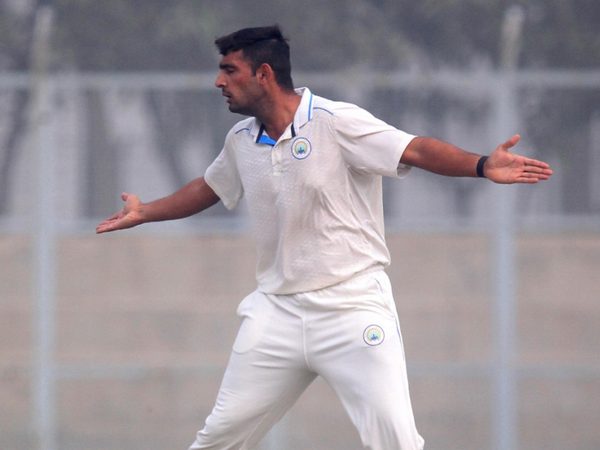
The Wisden Trophy will be awarded every year to the cricketer – man or woman – who has produced the outstanding Test performance of the previous 12 months. In its inaugural year, the Wisden Almanack also announced on retrospective winners for the years 1877 and 1939.
Lawrence Booth
Three years ago, a call came from Tom Harrison, then chief executive of the ECB. The Wisden Trophy, awarded to the winners of the England v West Indies Test series since 1963 – the Almanack’s centenary edition – was being replaced by the Richards-Botham Trophy, first played for in the Caribbean early in 2022.
The Wisden Trophy had been more appropriate than many realised, having been pushed through by Learie Constantine, the glittering West Indian allrounder and civil-rights campaigner who later became Britain’s first black peer. It’s possible no cricketing figure has straddled the two cultures with greater talent or dignity. Now, the silverware – the third-oldest prize in Test cricket, after the Ashes and the Frank Worrell Trophy – was being quietly ditched, without even a glance in Constantine’s direction.
We felt it deserved better, and so Wisden consulted MCC, who had supported Constantine’s initiative, and have displayed the trophy in the Lord’s museum ever since. The original, it was agreed, should remain there, and a new one would be commissioned, with the same name, but a different aim: to celebrate all Test cricket, not just a single series.
The first Wisden Trophy was on average contested every other year, and changed hands just seven times in almost six decades. The second will be awarded every year to the cricketer – man or woman – who has in the Almanack’s view produced the outstanding Test performance of the previous 12 months.
The first winner is Jonny Bairstow, for his twin hundreds against India at Edgbaston, where England hit 378-3 and stormed to victory. He is no stranger to Wisden awards: he was our first Schools Cricketer of the Year in 2007, one of the Five in 2016, and won Book of the Year in 2017 for his autobiography, A Clear Blue Sky, co-written with Duncan Hamilton.
He is an appropriate winner, too. The new trophy comes at a time when Test series are being squeezed more than ever by white-ball franchise competitions. Wisden has always argued for Test cricket’s primacy, and it seemed a good moment to symbolise the conviction. And Bairstow was in the vanguard of England’s thrilling new approach.
There was another opportunity too good to miss. Amid lively debate, the editorial team settled on retrospective winners for the years between the first Test – Australia against England at Melbourne in March 1877 – and the last before the Second World War, in August 1939.
With eight years containing no Test cricket, and one year discounted because it had only a single day’s play (December 31, 1881), there were 54 winners. Twenty-seven were England players, 23 were Australians, three were South Africans, and one – George Headley, for an unbeaten 270 in an innings win over England at Kingston in March 1935 – was West Indian. Performances with the bat accounted for 28, with the ball for 20, and with both for five; in 1901, which included just one Test, wicketkeeper Dick Lilley is named partly for his 84 from No.7, and partly for his five dismissals, as England won by an innings at Sydney.
Just seven women’s Tests took place before the war, and only England’s Myrtle Maclagan came close to making the list. But not even her first-innings contribution of 17-11-10-7, followed by 72 as opener in a nine-wicket win at Brisbane in December 1934, could oust Don Bradman’s triple-hundred at Leeds in July.
Bradman is the only three-time winner, while fellow Australians Fred Spofforth, Clem Hill and Victor Trumper all win twice – as does England’s SF Barnes, who uniquely retained his award, thanks to 17 wickets at Johannesburg in 1913, then 14 at Durban early the following year.
Above all, perhaps, the list is a retelling in miniature of Test cricket’s formative decades, starting with Charles Bannerman (who still holds a record he set at the start of it all, 146 years ago), and encompassing the birth of the Ashes, the Golden Age romance of Ranji, Gilbert Jessop’s fireworks at The Oval, the arrival of the googly, the emergence of Victor Trumper, the genius of Barnes and Wally Hammond, and the flowering of Bradman, Headley and Len Hutton.
There is folklore, but also surprise. Harold Larwood is a winner, but not because of Bodyline: four years earlier, at Brisbane in December 1928, he made 70 and 37 from No.9, and took 6-32. Instead, 1932 goes to Stan McCabe, for his unbeaten 187 in four hours at Sydney, though Larwood claimed ten in the match, to set up victory. And in the three Bodyline Tests that tipped over into 1933, he did no better than a four-for.
The winner that year is Charles “Father” Marriott, the leg-spinner who collected 11 wickets against West Indies at The Oval in his only Test – a footnote in the history of the game, but celebrated here. As for McCabe, his best innings probably came in 1938, when he made 232 at Trent Bridge. Trouble is, Hutton scored a world-record 364 two months later.
Other names feature less than their status seems to demand. WG Grace appears only in 1880, the year of his Test debut; Warwick Armstrong is limited to 1920, Hammond to 1929. Clarrie Grimmett never played another Test after winning in 1936. Jack Hobbs, Herbert Sutcliffe, Bill Woodfull and Bill Ponsford – four of the greatest batsmen – are absent altogether.
Next year, Wisden will name the post-war winners – a line that stretches, we hope, far into the future.
The winners, 1877-1939
Steven Lynch
1877: C Bannerman, Australia v England at Melbourne
An innings of 165 (retired hurt) in the first Test of all amounted to 67.34% of the total, still a record.
1878: There was no Test cricket
1879: FR Spofforth, Australia v England at Melbourne
Match figures of 13-110 included the first hat-trick in a Test.
1880: WG Grace, England v Australia at The Oval
WG made 152, the first Test century in England, in the first match there.
1881: There was only one day of Test cricket
1882: FR Spofforth, Australia v England at The Oval
England needed 85, but “The Demon” (7-46 and 7-44) skittled them for 77 – and the Ashes were born.
1883: W Bates, England v Australia at Melbourne
Match figures of 14-102, which included a hat-trick, set up the first innings victory in a Test.
1884: WL Murdoch, Australia v England at The Oval
Australia’s captain hit 211, the first double-century in a Test.
1885: GJ Bonnor, Australia v England at Melbourne
No.8 Bonnor spanked a 100-minute century on his way to a match-changing 128.
1886: A Shrewsbury, England v Australia at Lord’s
Shrewsbury’s 164, in a match where no Australian made 50, clinched the Ashes.
1887: GA Lohmann, England v Australia at Sydney
Figures of 27.1-12-35-8 (and 40-16-52-2 in the second innings) ensured England took the series.
1888: W Barnes, England v Australia at The Oval
England squared the series, with Barnes scoring 62 and taking 5-32.
1889: J Briggs, England v South Africa at Cape Town
Briggs’s left-arm spin (7-17 and 8-11) routed South Africa in only their second Test.
1890: F Martin, England v Australia at The Oval
Kent left-armer “Nutty” Martin took 12-102 in his first Test (and played only one more).
1891: There was no Test cricket
1892: JJ Lyons, Australia v England at Sydney
An innings of 134 out of 174 in 185 minutes swung the series Australia’s way.
1893: WH Lockwood, England v Australia at The Oval
Four wickets in each innings, all top-seven batsmen, set up the series’ only decisive result.
1894: R Peel, England v Australia at Sydney
Peel’s 6-67 helped achieve the first Test victory after following on.
1895: AE Trott, Australia v England at Adelaide
On debut, scored 38* and 72* from No.10, then polished England off with 8-43.
1896: KS Ranjitsinhji, England v Australia at Manchester
Marked his Test debut with 154*, including 113 before lunch on the third morning.
1897: AC MacLaren, England v Australia at Sydney
In his first Test as captain, hit 109 and 50* as England won by nine wickets.
1898: C Hill, Australia v England at Melbourne
Aged only 20, scored 188 (including 182 on the first day) as Australia clinched an exciting series.
1899: VT Trumper, Australia v England at Lord’s
Trumper’s superb 135* swung the only positive result of a wet summer.
1900: There was no Test cricket
1901: AFA Lilley, England v Australia at Sydney
After hitting 84, England’s wicketkeeper made five dismissals.
1902: GL Jessop, England v Australia at The Oval
A legendary century – in 75 minutes, from 76 balls – steered England towards a one-wicket win.
1903: RE Foster, England v Australia at Sydney
A remarkable debut innings of 287 included a last-wicket stand of 130 with Wilfred Rhodes.
1904: W Rhodes, England v Australia at Melbourne
Figures of 7-56 and 8-68, despite having eight catches dropped, as England went 2-0 up.
1905: BJT Bosanquet, England v Australia at Nottingham
The inventor of the googly sealed England’s 213-run victory with 8-107.
1906: SJ Snooke, South Africa v England at Johannesburg
Snooke claimed 4-57 and 8-70 as South Africa went 3-0 up.
1907: C Blythe, England v South Africa at Leeds
Bowling unchanged throughout on a helpful pitch, slow left-armer Blythe took 8-59 and 7-40.
1908: C Hill, Australia v England at Adelaide
Down at No.9 because of illness, Hill cracked 160 and put on 243 with debutant Roger Hartigan.
1909: W Bardsley, Australia v England at The Oval
The first instance of two centuries in the same Test: 136 and 130.
1910: GA Faulkner, South Africa v England at Johannesburg
Scored 78 and 123, and took 5-120 and 3-40, in a 19-run victory; was “carried round the ground”.
1911: VT Trumper, Australia v South Africa at Adelaide
“A display that even he has never surpassed,” thought Wisden of Trumper’s 214*.
1912: TJ Matthews, Australia v South Africa at Manchester
A hat-trick in each innings – still unmatched in Tests.
1913: SF Barnes, England v South Africa at Johannesburg
Followed 8-56 with 9-103 as England sailed to an innings victory.
1914: SF Barnes, England v South Africa at Durban
In the last of his 27 Tests, Barnes took 7-56 and 7-88, lifting his series tally to a record 49.
1915-19: There was no Test cricket in the war years
1920: WW Armstrong, Australia v England at Sydney
In his first match as captain, scored 158 to put Australia in an impregnable position.
1921: JM Gregory, Australia v England at Melbourne
Batting at No.9 on New Year’s Day, hit 100 – then took 7-69 to make England follow on.
1922: HW Taylor, South Africa v England at Johannesburg
A second-innings 176 set up South Africa’s only victory of the series.
1923: CAG Russell, England v South Africa at Durban
A double of 140 and 111 (despite illness) in his final Test helped England to a 2-1 win.
1924: AER Gilligan, England v South Africa at Birmingham
In his first Test as captain, followed 6-7 in a total of 30 with 5-83.
1925: J Ryder, Australia v England at Adelaide
His 201* from No.7 helped Australia recover from 119-6 to 489; they won by 11 runs.
1926: CG Macartney, Australia v England at Leeds
Dropped fourth ball, he reached 112* at lunch on the first day, out of 153-1.
1927: G Geary, England v South Africa at Johannesburg
Geary took 7-70 and 5-60 as England won by ten wickets.
1928: H Larwood, England v Australia at Brisbane
Set the tone for the series with 70 and 6-32 as Australia – facing a total of 521 – subsided for 122.
1929: WR Hammond, England v Australia at Adelaide
After double-centuries in both previous Tests, hit 119* and 177 as England won by 12 runs.
1930: DG Bradman, Australia v England at Lord’s
The Don’s 254 was, he thought, his best innings; he added 334 at Leeds and 232 at The Oval.
1931: H Ironmonger, Australia v West Indies at Melbourne
A 48-year-old slow left-armer, Ironmonger took advantage of a sticky wicket with 7-23 and 4-56.
1932: SJ McCabe, Australia v England at Sydney
Defied the Bodyline attack with a memorable four-hour 187*.
1933: CS Marriott, England v West Indies at The Oval
In his only Test, the 37-year-old Kent leg-spinner “Father” Marriott took 5-37 and 6-59.
1934: DG Bradman, Australia v England at Leeds
Despite illness, Bradman hit 304 (and added 244 at The Oval).
1935: GA Headley, West Indies v England at Kingston
An innings of 270* set up victory – and West Indies’ first series win.
1936: CV Grimmett, Australia v South Africa at Durban
Figures of 7-100 and 6-73 – after ten-fors in the previous two Tests – paved the way for a 4-0 win.
1937: DG Bradman, Australia v England at Melbourne
Entering at 97-5, Bradman hit 270 (he added 212 and 169 in the last two Tests).
1938: L Hutton, England v Australia at The Oval
Broke the Test record with 364 of England’s 903-7.
1939: E Paynter, England v South Africa at Durban
His 243 lifted England to 469-4, enough for an innings win – the only result of the series.








